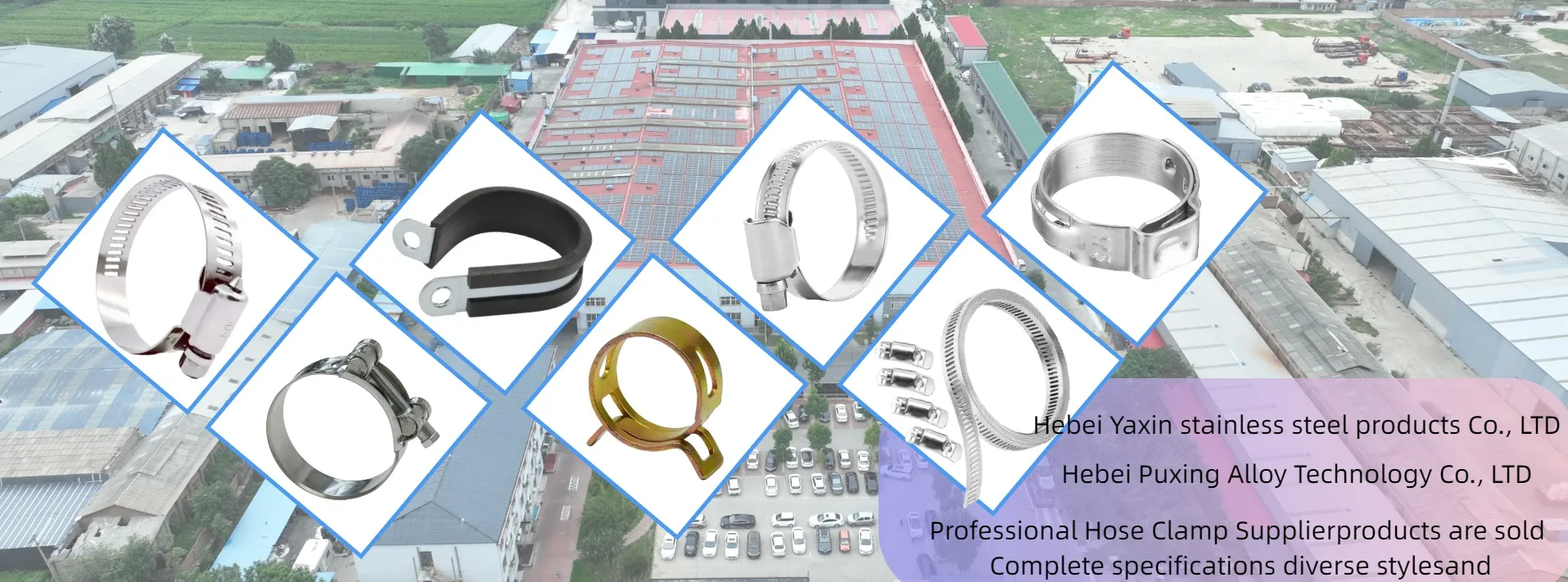- Phone:+86-17331948172 +86-0319-8862898
- E-mail: inquiry@puxingclamp.com
Aug . 14, 2024 09:39 Back to list
High-Quality Precision Stainless Steel Strips for Versatile Industrial Applications and Enhanced Durability Solutions
Precision Stainless Steel Strip The Backbone of Contemporary Industry
Precision stainless steel strips have become an essential component in various industries, ranging from automotive to electronics, and beyond. These slender metallic strips, characterized by their durability, corrosion resistance, and excellent mechanical properties, serve a myriad of applications, making them a cornerstone of modern manufacturing and engineering processes.
Composition and Properties
Stainless steel is an alloy predominantly made up of iron, chromium, and nickel. The inclusion of chromium, usually at least 10.5%, is what gives stainless steel its unique rust-resistant properties. The precision stainless steel strip typically has very tight tolerances, meaning that it can be produced in exact dimensions to cater to specific applications. This precision ensures that the strips can fit flawlessly into designs, minimizing wastage and improving overall efficiency in manufacturing.
One of the most significant advantages of stainless steel strips is their remarkable strength-to-weight ratio. They can withstand substantial amounts of stress without deforming or breaking, which is crucial in applications where both strength and weight are considerations, such as in the automotive industry for lightweight vehicle designs that do not compromise safety.
Diverse Applications
The versatility of precision stainless steel strips is evident in their broad spectrum of applications. In the aerospace sector, they are used in manufacturing structural components, fasteners, and fittings that require high resistance to temperature and corrosion. Similarly, in the food and beverage industry, these strips play a crucial role in the production of equipment that interfaces with consumables. Their non-reactive nature ensures that food products remain uncontaminated.
precision stainless steel strip

In the electronics industry, precision stainless steel strips are used in the production of connectors, switches, and housings. Given the rapid advancement in technology, the demand for smaller and more intricate components has skyrocketed. Stainless steel strips can be produced in ultra-thin gauges, making them ideal for compact electronic devices without sacrificing performance.
Manufacturing Techniques
The manufacturing process of precision stainless steel strips involves several stages, including cold rolling, annealing, and finishing. Cold rolling allows for the desired thickness and surface finish to be achieved while maintaining strict tolerances. After rolling, the strips undergo an annealing process, which helps relieve stress in the material and enhances its ductility. Ultimately, finishing processes such as polishing or coating are applied to achieve the final desired surface characteristics, whether that is a high polish for aesthetic purposes or applied finishes for enhanced protection against corrosive environments.
Sustainability and Future Trends
As global industries increasingly focus on sustainability, the role of precision stainless steel strips is growing even more crucial. Stainless steel is 100% recyclable, and its long lifespan means that products made from these materials can be sustainable over the long term. Manufacturers are also exploring new techniques and methods to further reduce waste during production and increase the efficiency of recycling processes.
Looking ahead, the demand for precision stainless steel strips is expected to rise as industries innovate and create new applications that leverage the unique properties of this material. With continued advancements in production technologies, the capabilities of precision stainless steel strips will expand, allowing for even greater applications in the future.
In conclusion, precision stainless steel strips represent a vital material in the modern industrial landscape. Their unique blend of strength, versatility, and sustainability embodies the qualities needed to support contemporary manufacturing while contributing to a more sustainable future. As technology progresses and new challenges emerge, the relevance of these strips will undoubtedly continue to thrive, ensuring their place at the heart of innovation and industry.
-
Large Stainless Steel Adjustable American Type Hose Clamp - Hebei Pux Alloy Technology Co., Ltd|Corrosion Resistance&High Breaking Torque
NewsJul.30,2025
-
Large Stainless Steel Adjustable American Type Hose Clamp - Hebei Pux Alloy Technology Co., Ltd
NewsJul.30,2025
-
Large Stainless Steel Adjustable American Type Hose Clamp - Hebei Pux Alloy Technology Co., Ltd|Corrosion Resistance&Industrial Applications
NewsJul.30,2025
-
Large Stainless Steel Adjustable American Type Hose Clamp-Hebei Pux Alloy Technology Co., Ltd|Corrosion Resistance, Adjustable Design
NewsJul.30,2025
-
Large Stainless Steel Adjustable American Type Hose Clamp - Hebei Pux Alloy Technology Co., Ltd. | High Breaking Torque & Corrosion Resistance
NewsJul.30,2025
-
Large Stainless Steel Adjustable American Type Hose Clamp - Hebei Pux Alloy Technology Co., Ltd
NewsJul.30,2025




